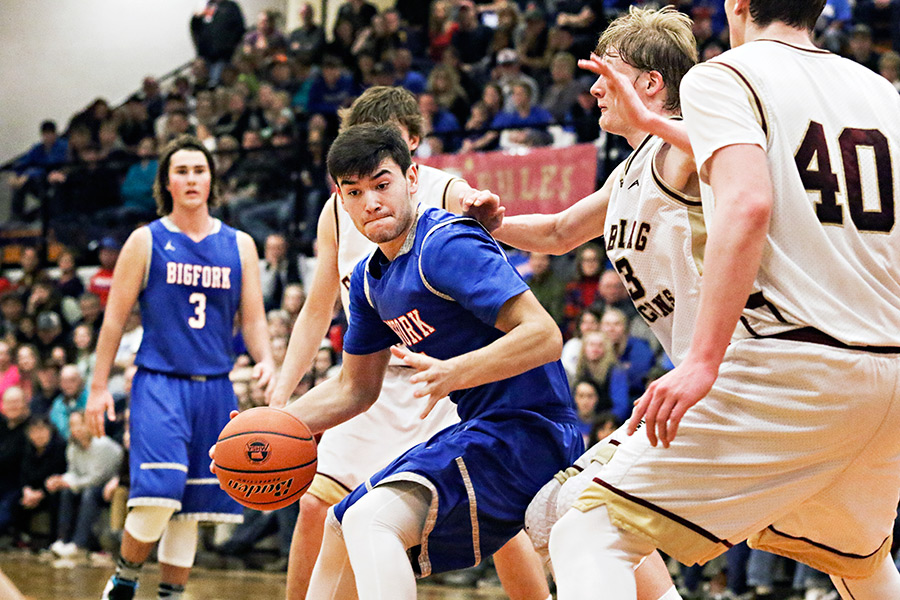Libby, Ronan Returning to Class A; Bigfork Approaching Reclassification
The MHSA executive board approved new enrollment ranges for all classifications
By Dillon Tabish
In response to an overall dip in high school students, the Montana High School Association is revising its enrollment ranges for sports classifications, forcing Libby and Ronan to change in 2017 and possibly impacting Bigfork in future years.
Libby’s sports teams will return to Class A and the Northwestern A conference next year. Ronan will also leave Class B and return to the Class A ranks and the Northwestern A conference.
For football only, Troy will leave Class B and join the Class C 8-man ranks along with Saint Ignatius. Hot Springs, which won the Class C six-man championship last weekend, will move to Class C eight-man.
The MHSA executive board approved new enrollment ranges for all classifications at its Nov. 21 meeting. The organization will announce the specific conference alignments later this week.
To be designated a Class AA school, the threshold moved from a minimum of 826 students to 779. The range for Class A schools changed from 340-825 students to 307-778. For Class B, the new range is 108-306, down from 120-339. The Class C threshold is now any school with fewer than 107 students, compared to 119. In football, the range for six-man teams is now 65 or fewer students and the eight-man division is 65-130 students.
The MHSA will continue allowing any school that exceeds it maximum enrollment level by 10 percent or less to remain at the lower classification for two years.
Belgrade is approaching the threshold to become a Class AA team in two years, which would mark the first addition to the top classification since Glacier was created in 2007. Bozeman is also planning on opening a new high school in 2020.
The board rejected Ronan’s request to stay in Class B but accepted requests from Plains and Choteau to stay in Class C.
Overall high school enrollment across the state has dropped 17 percent since 1995, according to the MHSA.
Bigfork, which had 305 students this fall, is poised to exceed the threshold for Class B in the coming years. Based on enrollment trends and a growing middle school population, Bigfork could return to Class A in 2019, when the next classification evaluation would occur.
Bigfork moved from Class B to Class A in 1996 and after years of enrollment declines it moved back to Class B in the fall of 2009. Since then, the boys basketball team and football team have both won state championships alongside achievements for teams and individuals in other sports.
Dave Creamer, a Bigfork alum and the school’s activities director, acknowledged there is some anxiety associated with moving classifications in the near future. The biggest impact of moving to Class A would likely center on football, a sport that tends to favor teams with a larger number of participants.
“We’ve had pretty competitive teams in most other sports, but football is where there is concern because that’s the sport that’s hardest to compete with schools bigger than you,” he said.
Creamer believes the recent success in Bigfork is not solely tied to the school’s move to Class B.
“Everybody associates the move back down to Class B with our success. I think that was definitely helpful. But we were successful in Class A when we had Class A numbers,” he said. “When our enrollment dropped, that’s when we had our down time.”
Class B also has a strong pedigree of sports programs, such as wrestling and basketball, that should not be considered less competitive than Class A, Creamer noted. For example, Bigfork’s basketball teams have more than held their own against Class A programs in recent years; the boys team went undefeated against Flathead Valley’s Class A teams the last two years.
Moving back to Class A could help re-establish local rivalries with valleywide teams, Creamer said.
“We like where we’re at (in Class B). But we’d like to be in Class A and have some local rivalries. I think we’ve lost our rivalries. Eureka is a good rival for us but they’re a couple hours away,” he said.
Creamer said he is focused on increasing overall participation in activities and growing programs at the middle school level, a recipe that has helped other smaller schools achieve widespread success, primarily Beaverhead County, which is one of the smallest yet most successful Class A schools.
Among the other reclassifications, the executive board moved several Class B schools to Class C eight man football: Choteau, Forsyth, Joliet, Lame Deer, Lodge Grass, Rocky Boy, Saint Ignatius, Saint Labre and Troy. Power/Dutton-Brady, Shields Valley and Wibaux County are moving to Class C six-man.